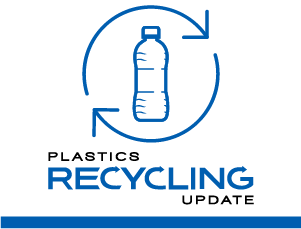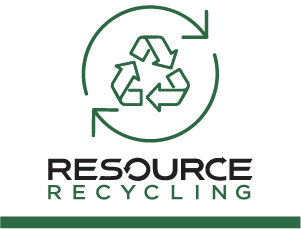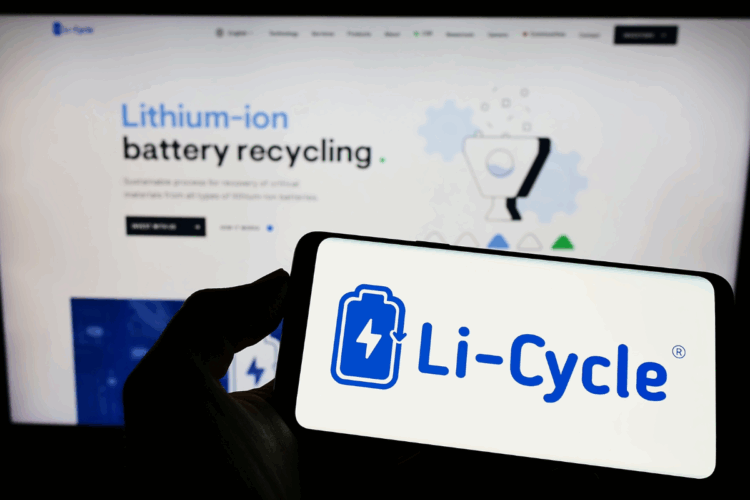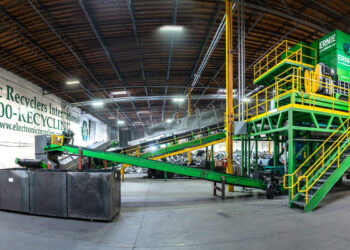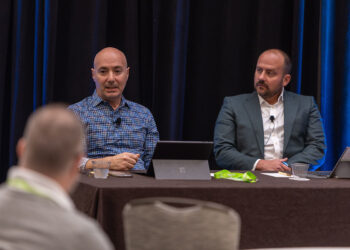Facing continuing losses year over year, lithium-ion battery processor Li-Cycle voiced concern in recent SEC filings about its ability to “achieve or sustain profitability” and repay its debts, as it has for several years.
Companies are required to disclose possible risks to the business in U.S. Securities and Exchange Commission filings, and in its 2024 10-K filing, Li-Cycle noted that there is “substantial doubt about Li-Cycle’s ability to continue as a going concern and to achieve or sustain profitability.”
In addition, the development of Li-Cycle’s Rochester Hub – construction on which was paused last year and caused the company’s share prices to drop – is dependent on drawing on a $475 million loan from the U.S. Department of Energy. The filing noted additional-third party financing or investment would be required to “satisfy the conditions to draw down” on the loan and to repay liabilities, “and we can provide no assurance that we will be able to obtain additional third-party financing or investment in our business, on attractive terms or at all.”
“The development of the Rochester Hub, Spokes and other future projects may not be completed on time or at the cost estimated and may not meet productivity or end product expectations,” the filing noted.
Although it reported total 2024 revenue of $28.0 million – a 53% increase over 2023 – the company reported a net loss of $137.7 million.
“Higher revenue, lower cost of sales and (selling, general and administrative costs) were offset by an increase in other expenses,” the company stated.
The loss came on top of a $138.0 million net loss in 2023 and negative cash flows from operating activities of $99.8 million that same year. Li-Cycle’s 2023 10-K SEC filing flagged concerns about “recurring losses from operations since inception,” stating that “there are certain conditions and events, considered in the aggregate, that raise substantial doubt about the Company’s ability to continue as a going concern within one year after the date that the consolidated financial statements are issued.”
The Canada-based company reported revenue growth in 2022 but even then was still posting losses.
Ajay Kochhar, Li-Cycle’s president and CEO, said in a March 31 press release that “we believe we are well-positioned to support, and are aligned with, the energy priorities of the U.S. government as they look to bolster and onshore the energy supply chain through the domestic production of critical minerals.
“Looking ahead, we are focused on managing our cash position while considering our financial and strategic alternatives,” he added.
One of those alternatives could be an acquisition. Smelting giant Glencore sent a letter on March 14 expressing interest in a potential transaction involving Li-Cycle, but the press release stated that it “can provide no assurance that it will enter into a strategic transaction with Glencore, on terms attractive to its shareholders and other stakeholders, or at all.”
“Given the Company’s current financial position, the terms of any strategic alternative may assign limited or no value to the Company’s existing equity,” Li-Cycle said in the release, adding that “if Li-Cycle is unable to obtain additional financing or enter into a strategic transaction, the Company will need to significantly modify or terminate its operations” and may need file for bankruptcy.
The company declined to comment further on its current outlook and financial situation.
Additional 2024 earnings takeaways
Beyond its overall revenue growth but net loss, Li-Cycle’s adjusted EBITDA loss improved to $90.5 million, compared to the $156.4 million loss in 2023.
Specifically, revenue from product sales and recycling services were $27.3 million, a 16% increase over 2023, due to higher volumes sold, but even that was partially offset by lower commodity prices.
Recycling service revenue in particular more than doubled year-over-year to $11.9 million, driven by new service contracts, the press release noted.
Li-Cycle also cut costs via cash preservation initiatives, restructuring and the construction pause. Capital expenditures dropped in 2024 to $23.9 million, compared to $334.9 million in 2023. Research and development costs also fell to $1.6 million in 2024, compared to $5.7 million in 2023.



